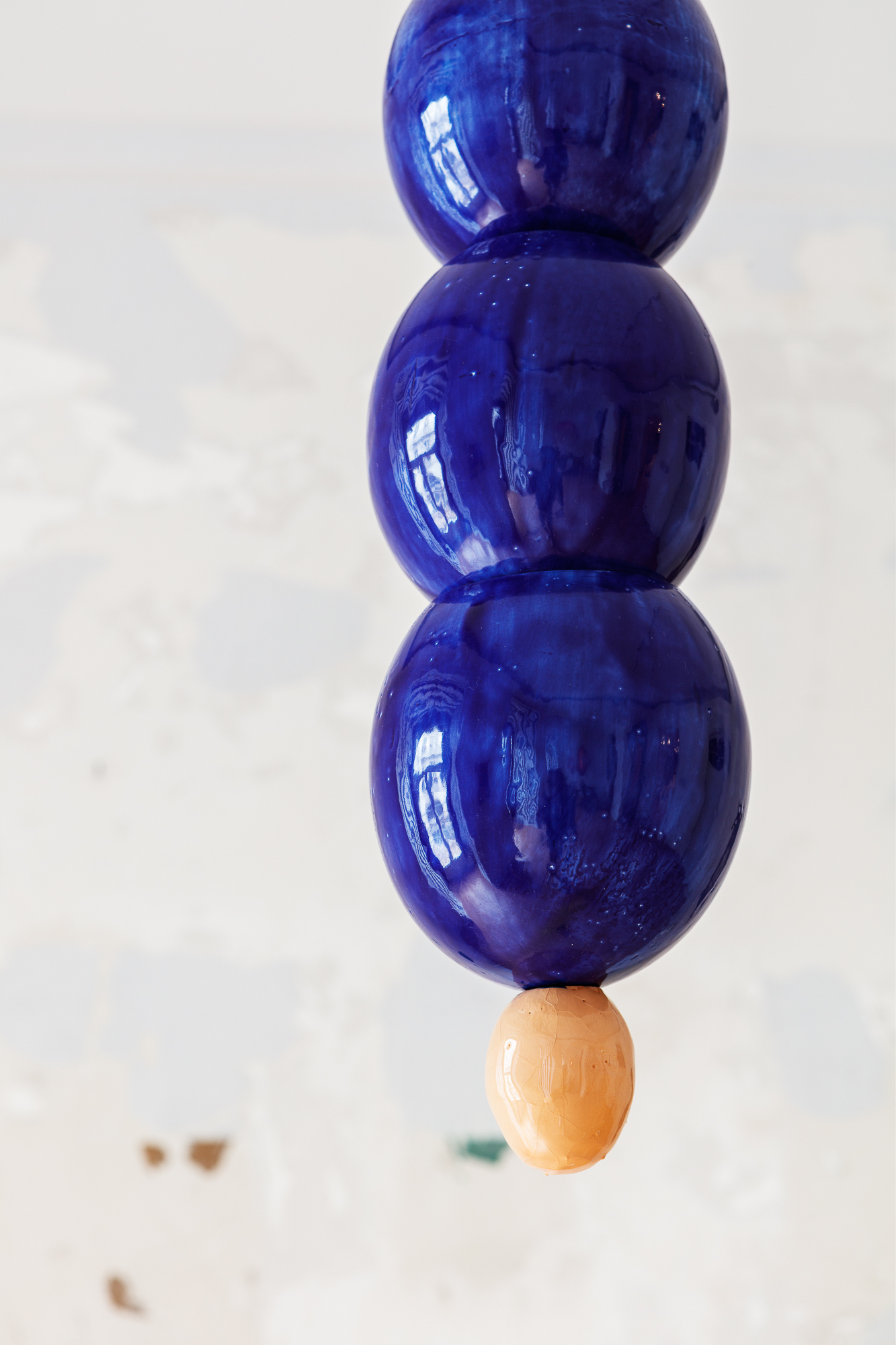Chalaza, 2022.










Chalaza (2022), solo show at Cabanamad Lisboa.
Article published at Umbigo magazine by Laurinda Marques https://umbigomagazine.com/pt/blog/2022/03/08/chalaza-francisco-trepa-na-cabanamad/
Chalaza: Francisco Trêpa at CABANAmad
In zoology, chalaza is the structure existing in bird and reptile eggs that allows the yolk to remain suspended; in botany, it is the region in the ovule of some plants. With this designation, Francisco Trêpa developed the series of works that he now presents in his most recent solo exhibition at CABANAmad.
The first work is the sculptural piece Two Gems (2022), composed of an iron structure that holds a porcelain piece. At its top, we see an amethyst ball submerged in a transparent resin that immobilises it and, inside, a small green agate sphere. This enigmatic composition becomes more evident with our presence, which, not being indifferent to the body of the work, makes it move. As we walk around Two Gems, we notice its fragility, albeit firm. Each step we take around it manifests itself in the balance of the work, which oscillates slightly as if imitating the movement of an egg yolk.
The invisible force that stabilises Two Gems spreads to Colbat Ostrich Egg Tower (2022), a tower suspended from the gallery’s ceiling composed of thirteen large eggs (painted in blue) and a replica of a common egg. As shown by the name of the work, the eggs depicted are those of the ostrich, an animal that, among the birds, is the one that produces the largest eggs. During the Bronze and Iron Ages, ostrich eggs were highly valued by several Mediterranean cultures, where it was customary to paint and embellish them with worked ivory[1] and, to a certain extent, Trêpa recovers that ritual here. On the other hand, the image constructed by Trêpa also reminds us of Piero della Francesca’s painting Brera Madonna (1472). In it, an ostrich egg is suspended by a thread attached to the vault of the Renaissance church, this composition’s background, composed of a Virgin surrounded by angels and saints, and a sleeping child on her lap. The dichotomy between strength and fragility is intensified by the work just below this tower: on the floor, Untitled (2022) is composed of an egg carton occupied by six porcelain eggs also painted in the same shade of cobalt blue.
Although eggs are in the majority of Chalaza works, Trêpa also adds a photograph showing the design of two oranges and one tomato, both fruits of flowering plants that have chalaza in their ovules. Also in the realm of photography, Egg on Egg on Tape (2022) captures an ordinary egg on top of an ostrich egg, both perfectly balanced on a roll of tape that serves as the base in this composition. These two eggs form a single body. Defying gravity, they hold each other in balance and seem joined by some common invisible thing. This composition comprises the porcelain sculpture that concludes the exhibition. Untitled (2022) shows two equal sculptural objects, composed of three eggs of different dimensions stacked in the shape of a tower. This sculpture follows the language of Cobalt Ostrich Egg Tower, but, instead of being suspended from the ceiling, it has been perpendicularly fixed to the wall. When viewed from the front, the sculptor’s different planes unify and look more like an egg yolk. The use of porcelain to reproduce the shape and texture of an egg makes the artificial object more natural, as we know that both materials are fragile. Francisco Trêpa challenges the object’s fragility by suspending it from the ceiling or wall, creating a constant tension in the space they occupy and the other objects surrounding them.
Food is extremely important in Francisco Trêpa’s artistic output, working as a key character in his works, as he explained in an interview with Umbigo last December: “There is something that fascinates me in a piece of clay that takes the shape of an egg and starts to act like an egg, even though it is not. We know the sound a spoon makes when it touches glass or wood, and that fascinates me in sculpture when we make objects that may seem so distant, but which, deep down, given their material constitutions, are so close to us. With food we can also speak of an exterior – interior relationship because they travel in our body, they enter, leave, are absorbed…”. In Chalaza, the eggs are the main characters. These, besides being food, symbolically invoke the beginning, the simple, or the origin of life.
Chalaza is at CABANAmad until March 31, 2022.
[1] Addley, Esther (2020). “British Museum looks to crack mystery over-decorated ostrich eggs”. The Guardian.